Otterhound 101: The Essential Guide
| Origin | England |
| Size | Large |
| Height | 24 to 27 inches |
| Weight | 80 to 115 pounds |
| Life Expectancy | 10 – 13 years |
| Breed Group | Hound Group |
| Affection Level | ⭐⭐⭐ |
| Friendliness | ⭐⭐⭐ |
| Activity Level | ⭐⭐⭐ |
| Barking/Howling Level | ⭐ |
| Pet Friendly | ⭐⭐⭐ |
| Kid-Friendly | ⭐⭐⭐ |
| Shedding | ⭐⭐ |
| Easy to Groom | ⭐ |
| Easy to Train | ⭐ |
Table of Contents
Origin


Otterhounds, which originally come from England, are believed to be closely related to the Bloodhounds. Due to the particular ear fold, this distinct dog breed might also be sharing the same genetic pool as the French Griffon. Early on, there was a huge problem when it came to fish harvesting. The rivers were usually occupied by a large number of otters which ate great amounts of fishes leaving scraps for the fishermen.
Fairly enough, the Otterhound was eventually developed to deal with the growing number of otters in the banks of the rivers. This, later on, became a prominent sport wherein scent hounds are used to hunt otters.
The Otterhound’s strong sense of smell could easily track down an otter whether it be in the waters or the land. Due to his magnificence, several royalties like Queen Elizabeth and Edward II greatly admired this dog breed. Ultimately, the Otterhound reached its peak in popularity before World War 1. However, most dogs were a result of crossbreeding as hunters aimed for more developed offspring.
Appearance
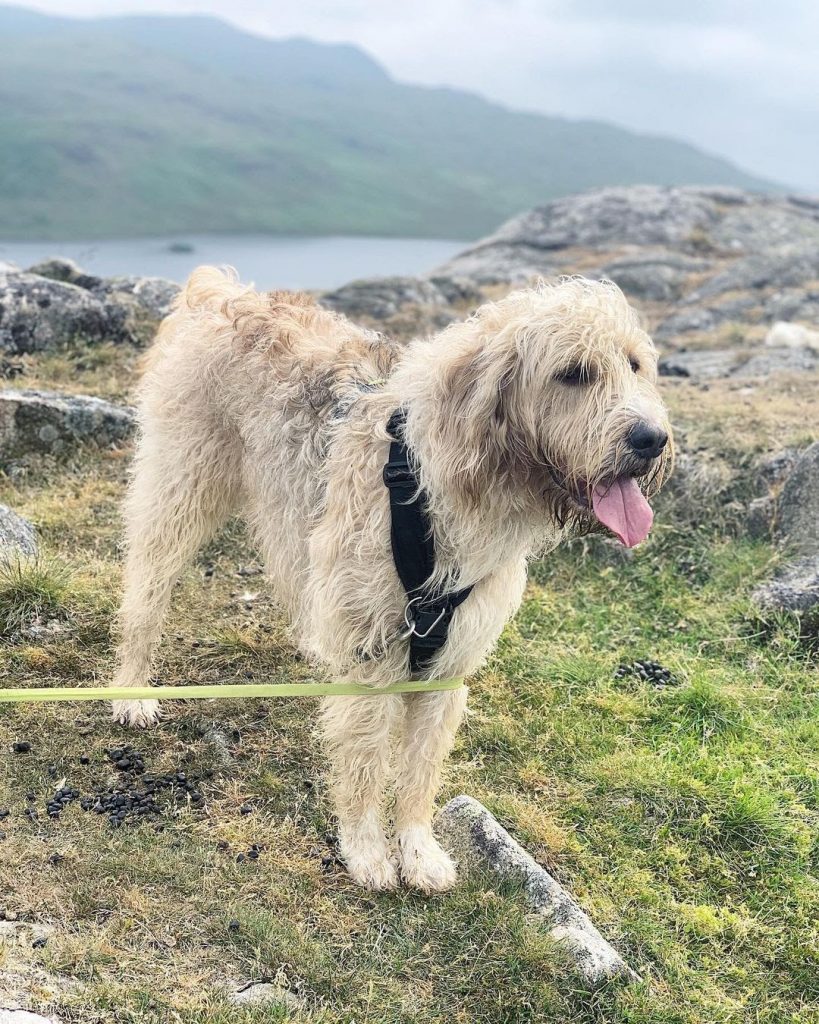

By the looks of it, the Otterhound physically embodies the kind of energy level he contains. He is well-complemented with a strong sturdy body that would not pose a disadvantage while he does his scent-tracking job.
With his waterproof shaggy coat and webbed feet, the Otterhound could swim effortlessly in rivers in pursuit of countless otters. He can last a day on the trails thanks to his powerful shoulders and strong chest. His nose is extremely keen for a smell even if the otter swims deep in the water. Since he’s a large scenthound, a 20-pound otter would be easy peasy.
Here’s a better description of this dog’s height and weight:
| Gender | Height | Weight |
| Female | 24 inches | 80 pounds |
| Male | 27 inches | 115 pounds |
Descriptively, the coat is typically scruffy due to the double coat. The outer coat can be as long as 6 inches while the undercoat has a woolly texture and is sometimes greasy. All of the natural Otterhound colors are recognized except for liver and white, all white, and white with tan patches or distinct black shades.
Temperament
Otterhounds are not very complex dogs. You can easily predict his behavior depending on how he was treated during his puppyhood. The American Kennel Club describes this breed as even-tempered, cordial, and rambunctious, but there is more to it than that!
Affection
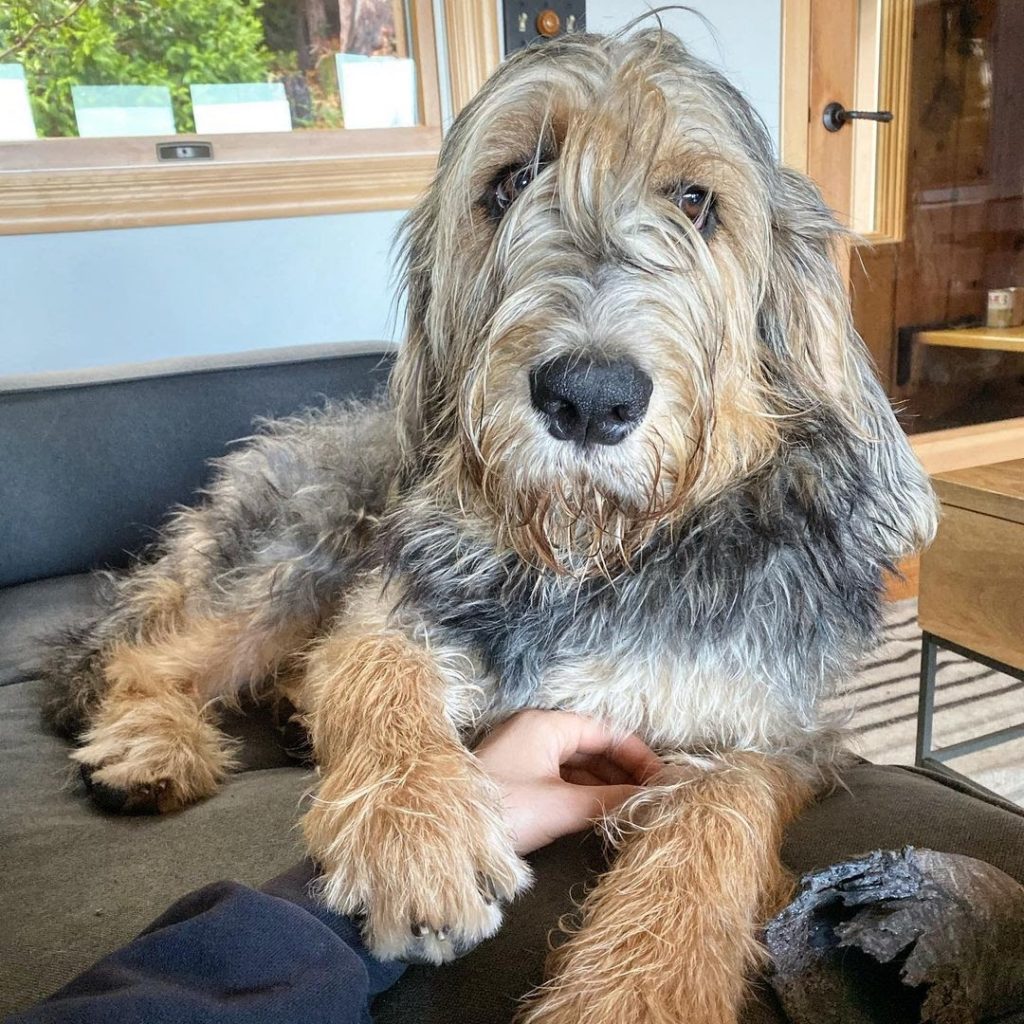

The Otterhound won’t have any problem if his owner isn’t at home for the whole day yet if he gets the chance to spend time with his favorite human, he wouldn’t mind bonding for hours. Remarkably, this dog is vocal about his feelings. You’d know well how he feels through his constant sighs and mutters and the moment you hear these, he’s probably just asking for bits of love from you.
Barks and howls could be quite melodic for Otterhound owners but might be annoying for the neighbors so try to make your Otterhound pup keep his baying sound as low as he can.
One thing to know about the Otterhound is that behind his large and strong looks is a soft-hearted fellow who seeks a meaningful relationship with his family.
Friendliness
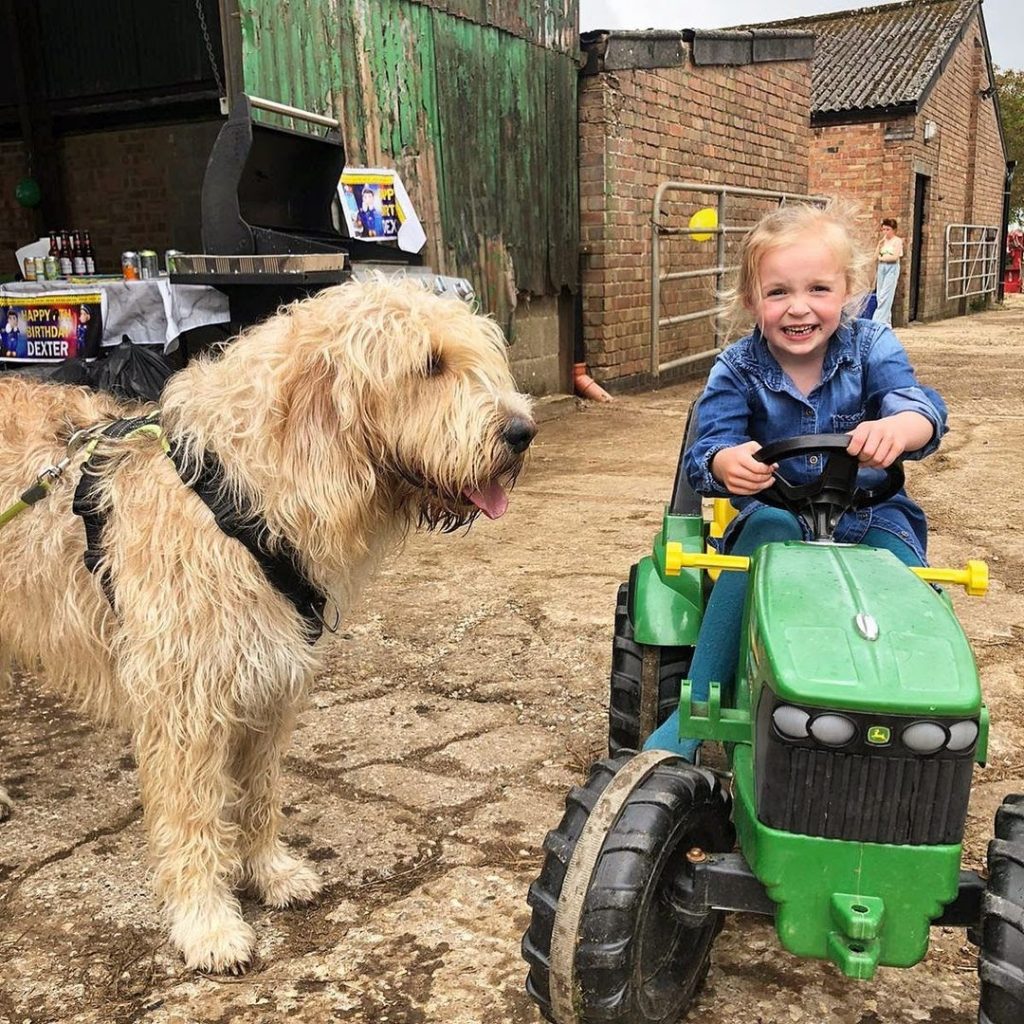

If you have an Otterhound, you have to be aware that this dog has a pack mentality. If ever you have to leave him, be sure he has company or he’ll develop bad behaviors, later on. Socialization is not a challenge if you’re thinking of introducing other dogs to him as he’s amiable. Families with kids who consider getting Otterhounds would find him a great choice too, but not if they have toddlers as this dog can be too boisterous.
The politeness of the Otterhound may decline if he sees his owner as a threat and if trust is not established. That’s why harsh punishments will never discipline your dog. These will only create a huge gap in your relationship which would be hard to fill up once the dog matures.
When it comes to strangers, any suspicious movements will alert the canine immediately. However, because of his friendly nature, most dogs of this type are only good watchdogs. If the Otterhound has no choice but to fight, he will surely not step back but rather fight the attacker with everything he got.
Activity Level
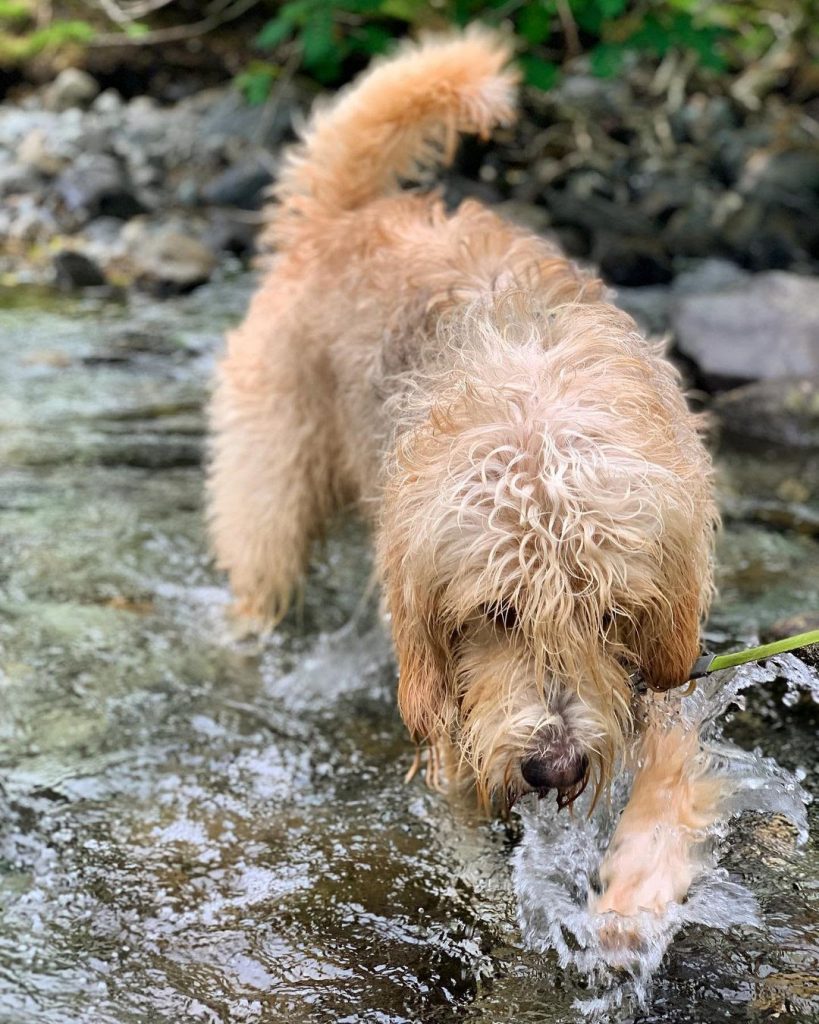

Otterhounds love to play games no matter if their playmates are dogs or kids, but you have to choose which ones should your pet be socialized to. Young children must know how to be gentle in handling the pooch while other dogs should be as sociable as him.
As an owner, you have to prepare the amount of energy you’ll have to spend on this clownish dog as he can play for the whole day without getting weary. Since the Otterhound is a scent hound, it is productive for him to be exposed to outdoor environments and different smells and faces which makes it difficult for apartment dwellers to own this kind of dog.
Just be cautious about bringing an unvaccinated Otterhound puppy outside. If he hasn’t completed his shots yet, limit his exposure to other dogs as much as possible.
In some instances, you might notice your dog being calm, but this doesn’t translate to being lazy. But, once this dog reaches old age or hasn’t been encouraged to do activities, he’ll eventually become lethargic and would resort to being called a couch potato.
Care
In getting yourself this wonderful Otterhound breed, it isn’t just the temperament you should be searching over the internet. Creating a meaningful and long-lasting relationship with your prospective dog would require you to meet his basic needs. A happy dog equates to a happier life!
What’s great about owning an Otterhound is that, unlike the other dog breeds, he is moderate in maintenance. Anyone wouldn’t find it taxing to meet his needs and anyone in the family would find it enjoyable to attend to his physical or mental demands.
Grooming
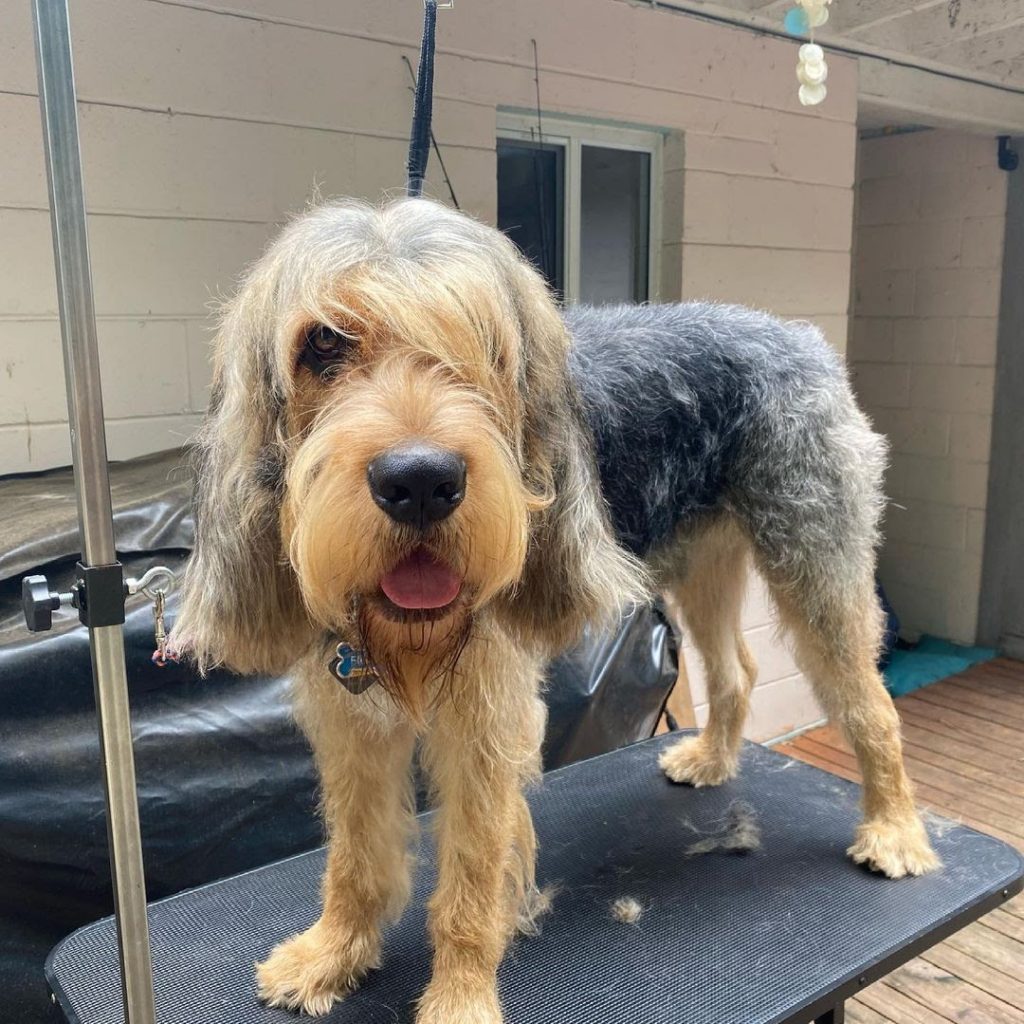

The Otterhound has a crisp-textured rough coat that would require weekly brushing. Not all of this dog breed has the same coat type as some might be oilier compared to others which means, you have to check on your dog every now and then to determine if he needs a bath more often. Some dogs can be washed monthly while others, yearly.
To keep his hygiene top-notch, it is recommended to wash the Otterhound’s feet to avoid mud and debris. His beard should also be wiped clean after he finishes his meal to prevent it from stinking.
In grooming his wonderful coat, asking for your breeder’s advice is necessary so you would know how to deal with the hair properly. Some dogs have their fur stripped off by their owners once or twice a year to maintain its crispy quality while others go for clipping. Should you decide to clip your dog, you should know that you are also sacrificing the canine’s traditional coat quality. This is alright if you don’t join your dog for shows.
Additionally, bathing should be a nice and relaxing experience for the Otterhound breed. Ensure that he’s dry afterward, especially on the skinfolds and chin. Leaving him with the mildew effect will cause him tender spots and other respiratory issues like wheezing, coughing, and breathing problems.
The rest of his needs are nail trimming, ear cleaning, and tooth care. Use canine appropriate products. If your dog suffers from allergies, only use hypoallergenic ones or those recommended by your vet.
Food and Diet


In raising an Otterhound puppy, deciding on the best quality food and diet will make a huge impact on your dog’s well-being. At the start, you should ask the breeder the name of the food, the amount, as well as the feeding schedule. You can gradually change the diet and shift it into a more age-appropriate dog food every week.
Replacing a quarter of the old dog food with the same measure of the new food weekly until the diet is completely changed is advised so that the Otterhound puppy’s stomach won’t be upset. In rare cases, a dog can experience food poisoning if the new food has ingredients that his body couldn’t tolerate or has not been used to.
There are several tips you can follow to make feeding easier for your Otterhound pet:
- Do not overfeed your Otterhound. If you notice that your dog has low self-control toward food, don’t give him free access to meals.
- If supplements are necessary, ask your vet to assess your dog’s health condition so he could recommend the suitable ones.
- Allow the Otterhound dog to rest for an hour after a vigorous exercise before he takes his meal and another hour for him to digest properly.
- Discourage the counter-surfing habit where your Otterhound reaches over the counter to grab foods that are not health-appropriate for him.
- Do not feed him table scraps so your dog won’t be a finicky eater, later on.
- Feed your dog twice per day. Let him devour his meal undisturbed and make sure his bowl is either inside his crate or within the dog area.
- Never feed him bones of any kind. These could puncture his innards which may cause serious health complications.
Feeding tips aren’t just what an owner should know to keep an Otterhound dog healthy. There is also a brief list of food items the ASPCA has itemized that should never be fed to this British rugged dog. Doing so can cause toxic reactions.
- Coffee
- Avocado
- Fatty foods
- Chocolate
- Onions
- Grapes and raisins
- Macadamia nuts
- Salt
- Yeast dough
- Spoilt foods
- Alcoholic beverages
Exercise


This dog breed is used to doing heavy tasks in the past and the thirst to steam off is great. Even when an Otterhound is young, he would constantly look for ways to release his pent-up energy. That means the right owner must be able to commit to accompanying this large canine for an exercise so he’d considerably live a longer life.
Having a large yard at home is not a requirement, but a fenced area is. Since this is a powerful scent hound, taking him out off-leash can lead to potentially fatal consequences. This dog follows his nose more than his owner once he picks up a scent. Apparently, the smell is more tempting to follow than the commands of the owner.
A good alternative for Otterhound owners who do not have a huge yard is either a long walk, jog, hike, or hunting.
There are other creative ways to exercise him if you think your dog needs more than just a stroll in the park. You could try some of these:
- Fetch. You must only do this in a secure area. As far as you can, throw a ball, stick, or his favorite toy for your Otterhound pet to fetch.
- Find the toy. You can hide his favorite toy somewhere in the house for him to find. This game will not only keep him moving but his sense of smell will also keep it working! You can use treats instead of toys but use them in moderation.
- Tug of war. Otterhounds can play endlessly! Using an appropriate item for a tug of war, play it with your dog and make sure it’s fun. Observe as well if he plays aggressively. If he does, the game should be replaced with something calmer so he won’t further develop aggression.
Training


Tagged as a fairly intelligent dog, the Otterhound can easily pick up skills and training. However, this dog has a working history that required him to be independent in fulfilling the otter-hunting task, so training would take time and effort. He may show stubbornness being a scent hound so obedience training should be a priority for every Otterhound puppy.
Sometimes, training this large canine turns out to be unsuccessful. This mainly happens when owners do skills-learning that makes them feel good rather than determining which is good for their dogs. In instances when a dog shows good behavior, we are quick to reinforce him with treats. However, when he exhibits bad manners, some of us fail to correct it.
By simply telling the dog, “NO”, you are giving him the hint not to repeat the certain behavior in the future. Don’t just react to good results but as well as to the bad ones (appropriately).
Additionally, be warned not to use treats as a reward all the time. Food should be just a fraction in the “positive reinforcement” technique so try to incorporate other forms of prizes such as warm pets and praises. If the dog only responds when he sees his delicious snack on your hand, you are no longer in charge of the training but he is with you.
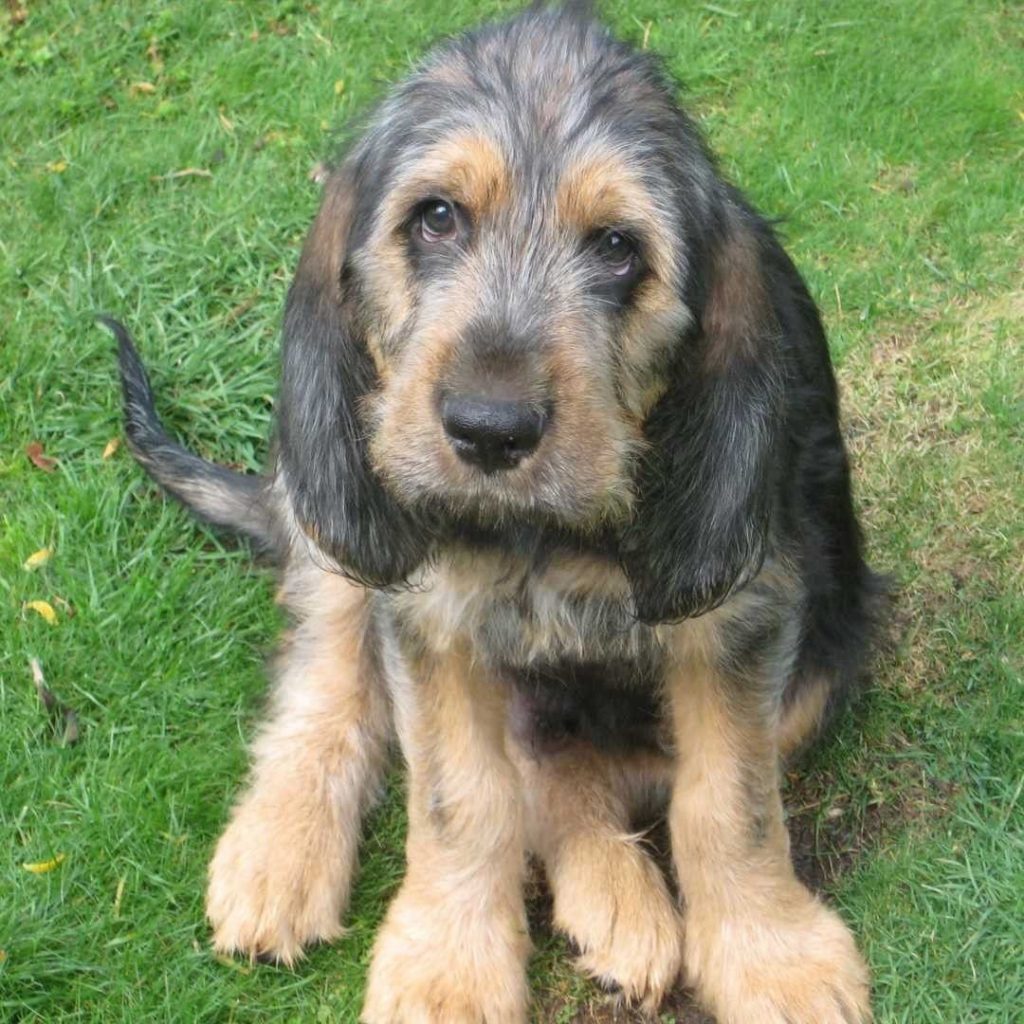

understandably, dog lovers such as you don’t want to inflict unhappiness toward your beloved Otterhound, but if he’s jumping at other people or if he’s being too rowdy with other dogs or kids, it’s more worthy to correct him early on rather than have a hard time breaking the bad habit when he’s too old to change already.
Health Problems


Knowing that dogs hold a special place in your heart, taking good care of your pets so they would live healthily is a priority. That’s why it is important to discuss the potential health problems your Otterhound could experience in his lifetime.
If you are aware of the common issues he’ll face, you and your vet can tailor a preventive plan to monitor the dog’s health status and, hopefully, avoid aggravating illnesses.
Most diseases are passed down through genetics which means your Otterhound will be at more risk for a certain complication compared to other dog breeds. That doesn’t mean, however, that every Otterhound dog will experience having all the genetic problems.
Here are the common health issues you have to watch out for and talk over with your dog’s vet:
- Dental disease
- Obesity
- Infections
- Parasites
- Bloat
- Hip dysplasia
- Elbow dysplasia
- Sebaceous cysts
- Bleeding disorders
- Cataracts
Pros and Cons of Having an Otterhound
Pros
- Amiable and easy-going
- Active and great as an outdoor dog
- Good exercise buddy
- Affectionate
- He’s enthusiastic and vocal with his needs
- He’s intelligent
Cons
- Exercise requirements are high
- Rowdy and stubborn
- High prey drive
- Loud baying
- Challenging to housebreak
Do Kennel Clubs Recognize the Otterhound?
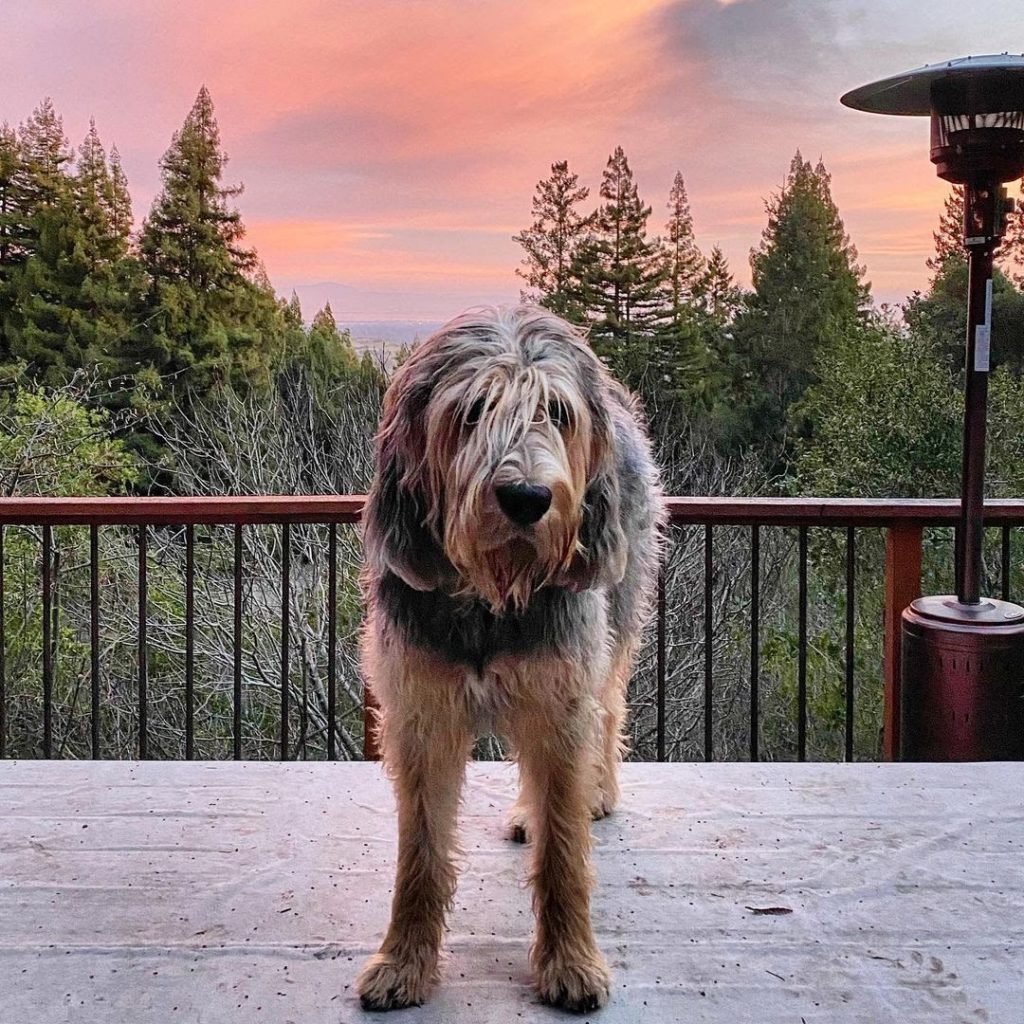

Absolutely! The Otterhound is often stated as a dream dog as he’s quite rare. There are only a few Otterhounds worldwide yet major and smaller kennel clubs acknowledge this breed. The American Kennel Club (AKC) recognized this in 1909 and is currently 182nd in the breed popularity ranking out of 200 registered dog breeds while The Kennel Club (UK) did it later in 1985.
It is worth noting that the Otterhound dog became one of the foundations of the well-known Airedale Terrier which most dog lovers fancy as well!
Cost


Since the number of this particular dog breed is quite low compared to demand, it is fair to say that looking for an Otterhound puppy let alone a breeder of it is hard. If ever you did find a breeder, you’ll usually be put on a waiting list.
The cost of an Otterhound puppy will vary depending on the breeder’s reputation and the quality of the dog. Expect to pay a whopping $3000 to $5000. In rare cases, you can get one for a lower price of $1500.
If this is the dog you’ve been wanting all these years, I recommend that you attend a few AKC shows and meet the breeders of this dog. You can also contact breeders most preferably in the UK where most of the Otterhounds are found.
Where to Adopt or Buy an Otterhound
The Otterhound dog breed is not the most common canine you’d find in shelter homes, but don’t let your hopes vanish! There are a few Otterhound adoption centers you can check. Who knows, there might just be one that’s waiting for you!
If luck isn’t at your side in searching for an Otterhound rescue, you might as well resort to a high-quality Otterhound breeder. To ensure you’re getting what you paid for, here are some of the reputable places you can visit:
Getting an Otterhound is not an easy task but once you bring home a puppy of such a kind, all your efforts will be deemed worth it! Currently, this special dog is more endangered than the Giant Panda and the White Rhino. There are only 300 in the UK and more than a thousand worldwide, so if ever you come across this large shaggy canine, treat him with the best you have!
